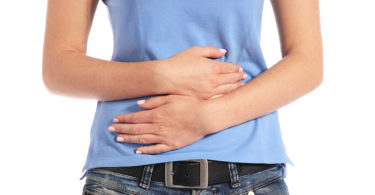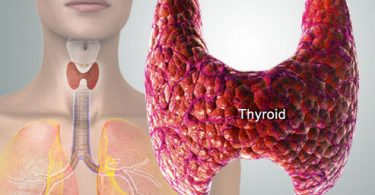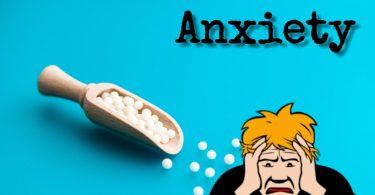Authored By-
DR HOZAIFA AYUBI
PG SCHOLOAR, DEPARTMENT OF PRCTICE OF MEDICINE
RBTS GOVT HOMOEOPATHIC MEDICAL COLLEGE AND HOSPITAL
MUZAFFARPUR, BIHAR
FAIZA SHAHNAZ
INTERN
RBTS GOVT HOMOEOPATHIC MEDICAL COLLEGE AND HOSPITAL
MUZAFFARPUR, BIHAR
INTRODUCTION:
Urinary tract infection (UTI) (also known as acute cystitis or bladder infection) is an infection that affects part of the urinary tract. When it affects the lower urinary tract it is known as a simple cystitis (a bladder infection) and when it affects the upper urinary tract it is known as Pyelonephritis (a kidney infection). Symptoms from a lower urinary tract include painful urination and either frequent urination or urge to urinate (or both); while the symptoms of Pyelonephritis include fever and flank pain in addition to the symptoms of a lower UTI. In some cases, a painful burning sensation in the urethra may be present even when not urinating. In the elderly and the very young, symptoms may be vague or non-specific. The main causal agent of both types is Escherichia coli, though other bacteria, viruses or fungi may rarely be the cause.
Urinary tract infections occur more commonly in women than men, also not infrequently found in children, but it can occur at any age, diagnosed according to sign and symptom.With half of women having at least one infection at some point in their lives. Recurrences are common.
Risk factors include-
female anatomy
sexual intercourse and
Family history.
AETIOPATHOGENESIS OF UTI
The urine is normally sterile. An infection occurs when bacteria get into the urine and begin to grow. The infection usually starts at the opening of the urethra where the urine leaves the body and moves upward into the urinary tract.
The culprit in at least 90% of uncomplicated infections is a type of bacteria called Escherichia coli, better know as E. coli. These bacteria normally live in the bowel (colon) and around the anus.
These bacteria can move from the area around the anus to the opening of the urethra. The two most common causes of this are improper wiping and sexual intercourse.
Usually, the act of emptying the bladder (urinating) flushes the bacteria out of the urethra. If there are too many bacteria, urinating may not stop their spread.
The bacteria can travel up the urethra to the bladder, where they can grow and cause an infection.
The infection can spread further as the bacteria move up from the bladder via the ureters.
If they reach the kidney, they can cause a kidney infection (pyelonephritis), which can become a very serious condition if not treated promptly.
PEOPLE IN RISK GROUP
• People with conditions that block (obstruct) the urinary tract, such as kidney stones
• People with medical conditions that cause incomplete bladder emptying (for example, spinal cord injury or bladder decompensation after menopause)
• People with suppressed immune systems: Examples of situations in which the immune system is suppressed are HIV/AIDS and diabetes. People who take immunosuppressant medications such as chemotherapy for cancer also are at increased risk.
• Women who are sexually active: Sexual intercourse can introduce larger numbers of bacteria into the bladder. Urinating after intercourse seems to decrease the likelihood of developing a urinary tract infection.
• Women who use a diaphragm for birth control
• Men with an enlarged prostate: Prostatitis or obstruction of the urethra by an enlarged prostate can lead to incomplete bladder emptying, thus increasing the risk of infection. This is most common in older men.
• Males are also less likely to develop UTIs because their urethra (tube from the bladder) is longer. There is a drier environment where a man’s urethra meets the outside world, and fluid produced in the prostate can fight bacteria.
• Breastfeeding has been found to decrease the risk for urinary tract infections in children.
PEOPLE IN INCREASED RISK GROUP
• Very young infants: Bacteria gain entry to the urinary tract via the bloodstream from other sites in the body.
• Young children: Young children have trouble wiping themselves and washing their hands well after a bowel movement. Poor hygiene has been linked to an increased frequency of urinary tract infections.
• Children of all ages: Urinary tract infection in children can be (but is not always) a sign of an abnormality in the urinary tract, usually a partial blockage. An example is a condition in which urine moves backward from the bladder up the ureters (vesicoureteral reflux).
• Hospitalized patients or nursing-home residents: Many of these individuals are catheterized for long periods and are thus vulnerable to infection of the urinary tract. Catheterization means that a thin tube (catheter) is placed in the urethra to drain urine from the bladder. This is done for people who have problems urinating or cannot reach a toilet to urinate on their own.
SIGNS AND SYMPTOMS OF UTI-
The most common symptoms are –
(For lower urinary tract infection)
Burning with urination.
Frequent urge to urinate.
Significant lower abdominal pain in the absence of vaginal discharge.
Some pain above the pubic bone or in the lower back may be present.
In young children, the only symptom of a urinary tract infection (UTI) may be a fever. Because of the lack of more obvious symptoms.
These symptoms may vary from mild to severe and in healthy women last an average of six days.
(For upper urinary tract infection, or pyelonephritis)
In addition to the classic symptoms of a lower urinary tract infection there will present –
Flank pain.
Fever.
Nausea and vomiting
Sign
Rarely the urine may appear bloody or contain visible pus in the urine.
DIAGNOSIS OF UTI
CLINICAL DIAGNOSIS
The clinical diagnosis of an infection of the urinary tract is essentially based on the medical history. Specific data may either increase the probability of an infection of the urinary tract or decrease it. The following factors have been established from clinical studies.
• Dysuria, pollakisuria, nycturia.
• Present or increased incontinence.
• Macrohematuria.
• Suprapubic pain.
• “Offensive” smell, turbid urine.
• Prior infections of the urinary tract.
• Changed or new discharge, vaginal irritation.
In addition, risk factors are known which increase the probability of UTI. These include –
• Sexual intercourse within the preceding two weeks.
• Contraception with a vaginal diaphragm or spermicide.
• Contraception with DMPA (depot medroxyprogesterone acetate).
• Antibiotic administration within the preceding two to four weeks.
• Special anatomical features or restrictions (for example, from vesicoureteral reflux, neuropathic bladder, mechanical or functional obstruction).
• Diabetes mellitus.
PATHOLOGICAL DIAGNOSIS
The gold standard for the diagnosis of a urinary tract infection is the detection of the pathogen in the presence of clinical symptoms. The pathogen is detected and identified by urine culture (using midstream urine). This also allows an estimate of the level of the bacteriuria. However, the minimum level of bacteriuria demonstrating an infection of the urinary tract has not been defined in scientific literature or standardized by microbiological laboratories. Many laboratories define 105 colony forming units (cfu)/mL urine as the threshold.
The bacterial count may be assessed by urine microscopy and immersion culture media.
Dip sticks
Urine dip sticks are one of the most frequently used instruments for diagnostic testing if there is clinical evidence that a patient is suffering from UTI. Multistix are most often used, which may be able to detect nitrite (a metabolic product of typical pathogens of the urinary tract), leukocyte esterase, protein and blood (as a marker of inflammation).
Urine microscopy
Due to methodological limitations the sensitivity in detecting UTI with <105 cfu/mL by gram stained microscopy is low. Some studies have found that experienced workers can achieve better diagnostic precision than with urine culture. However, the available studies on microscopy are heterogenous and all review articles conclude that it is difficult to make general statements.
Immersion culture media
These immersion tests use a plastic rod coated with culture medium—mostly a combination of CLED agar and MacConkey agar. They require 24 h culture. The values for sensitivity and specificity obtained in the laboratory. This procedure does not permit the reliable detection of <104 cfu/Ml.
TREATMENT AND HOMOEOPATHIC THERAPEUTICS
Treatment is based on two things-
1. General management.
2. Medicinal treatment.
General management
Improvement of general health, by-
• Maintaining proper hygiene.
• Taking sufficient fluid.
• Taking proper nutritious food.
• Keeping the genital region clean.
• Taking bath in clean water, not in pond in case of village people.
Sympathetic behavior
Sympathetic attitude towards the ailments and the anxiety state should be removed. This is specially applicable when related with young girl.
Medicinal treatment
• By Modern medicine (Allopathic).
• By Homoeopathic Medicines.
By Modern medicine-
According to Diagnosis (clinically based by sign and symptoms or by Pathological investigation like urine culture). Here the choice of treatment are Antibiotics, Antifungal etc
By Homoeopathic Medicines-
In Homoeopathy we give medicine based on totality of symptoms. But from clinical experience and according to Materia Medica of different Authors the choice of Homoeopathic medicines for UTI are-
Arsenicum album, Berberis vulgaris, Cantharis, Cannabis sativa, Equisetum hyemale, Lycopodium, Mercurius corrosivus, Natrium muriaticum, Nitric acid, Phosphoric acid, Sarsaparilla, Staphysagria, Sulphur, Terebinthina, Thuja.
Theraputic indication of above mentioned medicines are-
Name of
Medicine Symptoms of
UTI Associated symptoms Modalities
Arsenicum album 1) Urine scanty, burning, involuntary.
2) Bladder as if paralyzed.
3) After urination feeling of weakness in abdomen -Great anguish and restlessness.
-Great thirst, drinks much but little at a time Heat, warm drinks
Berberis vulgaris 1) Frequent urination, urethra burns when not urinating.
2) Sensation as if some urine remained after urination.
3) Bubbling, sore sensation in kidneys. -Sensation of a tight cap pressing upon the whole scalp.
-Nausea before breakfast. <Motion, standing
Cantharis 1) Intolerable urging, before, during, and after urination.
2) Burning, cutting pain in urethra during micturition, violent tenesmus and strangury.
3) Passage urine drop by drop mixed with blood. -Bloody nocturnal emission in male.
-Over sensitiveness of all parts. Rubbing
Cannabis sativa 1) Burning while urinating, extending to bladder.
2) Inflamed sensation of bladder with soreness to touch.
3) Micturition in split stream. -Walks with legs apart.
-Sensation of dropping water on head. <Lying down, touch
Equisetum hyemale 1) Severe, dull pain and feeling of fullness in bladder, not relieved by urinating.
2) Frequent urging with severe pain at the close of urination.
3) Sharp, burning, cutting pain in urethra while urinating. -Deep pain in region of right kidney, extending to lower abdomen. In afternoon from lying down.
Lycopodium 1) Urine slow in coming, must strain.
2) Pain in bladder, ceases after flow.
3) Polyuria during the night. -Dry mouth without thirst.
-Pains come and go suddenly. Motion, Worm food and drinks.
Mercurius corrosives 1) Tenesmus of bladder.
2) Urine hot, burning, scanty or suppressed, bloody, greenish discharge.
3) Albuminous urine. -Offensive breath.
-Perspiration after urination. Rest
Natrium muriaticum 1) Pain just after urination.
2) Has to wait long time to pass urine if others are present.
3) Involuntary urination, while walking, coughing. -Mapped tongue.
-Craving for salt. Open air, cold bathing.
Nitric acid 1) Burning and stinging pain while urinating.
2) Urine is scanty, dark, smells like horse’s urine.
3) Urine bloody and albuminous. -Very head strong.
-All discharges are very offensive. Motion
Phosphoric acid 1) Micturition, preceded by anxiety and followed by burning.
2) Frequent urination at night.
3) Phosphaturia. -Debility is very marked, first mental debility then physical. warmth
Sarsaparilla 1) Severe pain at conclusion of urination.
2) Urine scanty, slimy, flaky, sandy, bloody.
3) Urine dribbles while sitting. -No thirst.
-Tongue white, aphthae, salivation and metallic taste. >After urinating, at night.
Staphysagria 1) Burning in urethra during micturition.
2) Sensation as if a drop of urine were rolling continuously along the channel.
3) Ineffectual urging to urinate in newly married women. -Very sensitive as to what others say about her.
-Feels sleepy after eating. Rest, night, Warmth.
Sulphur 1) Burning in urethra during urination, last long after.
2) Mucus and pus in urine.
3) Must hurry, sudden call to urinate. -Great desire for sweets.
-Lips dry, bright red, burning. Dry, warm weather.
Terebinthina 1) Strangury, with bloody urine.
2) Urine is scanty, suppressed, odor of violets.
3) Inflamed kidneys following any acute disease. -Heat with violent thirst.
-Dry tongue.
-Profuse cold, clammy sweat. <From living in damp dwellings.
Thuja 1) Severe cutting pain after urination.
2) Sensation of trickling after urination.
3) Urinary stream split and small.
4) Desire sudden and urgent, but can not be controlled. -Fixed ideas.
-Sweat only on uncovered parts.
-Desire for onion. lying on left side.





